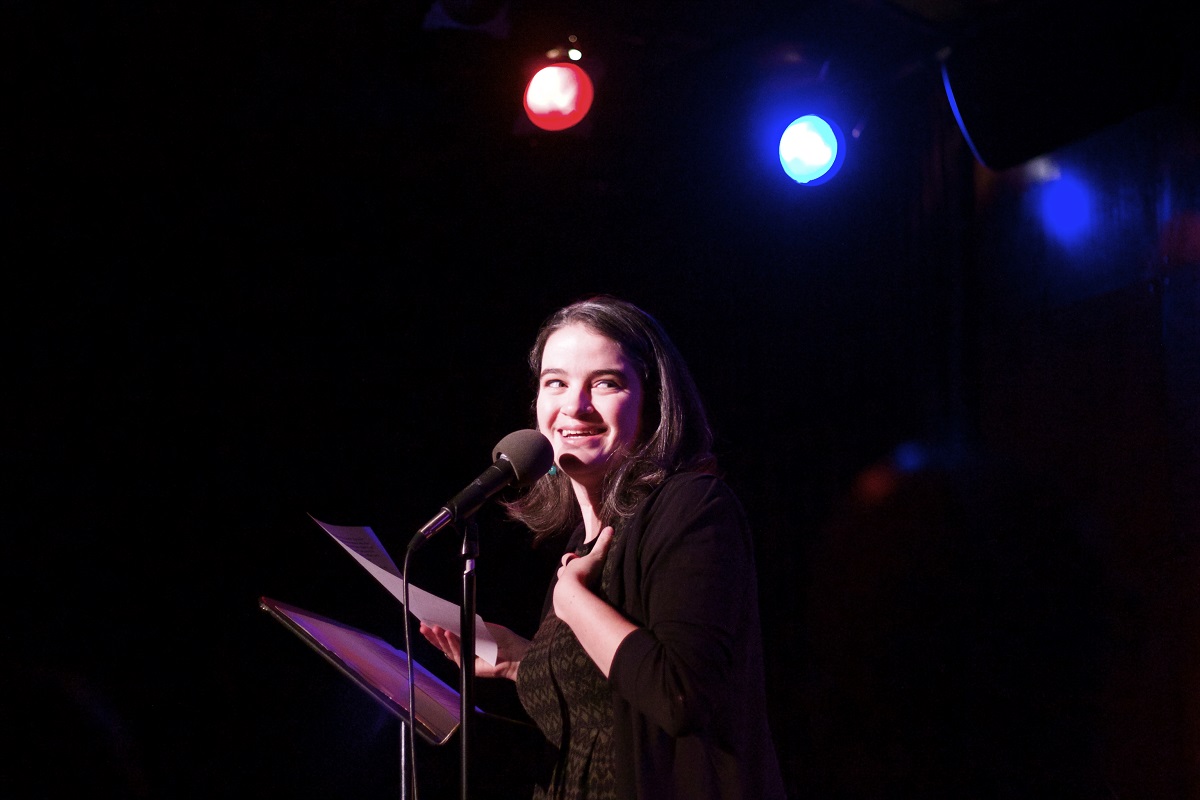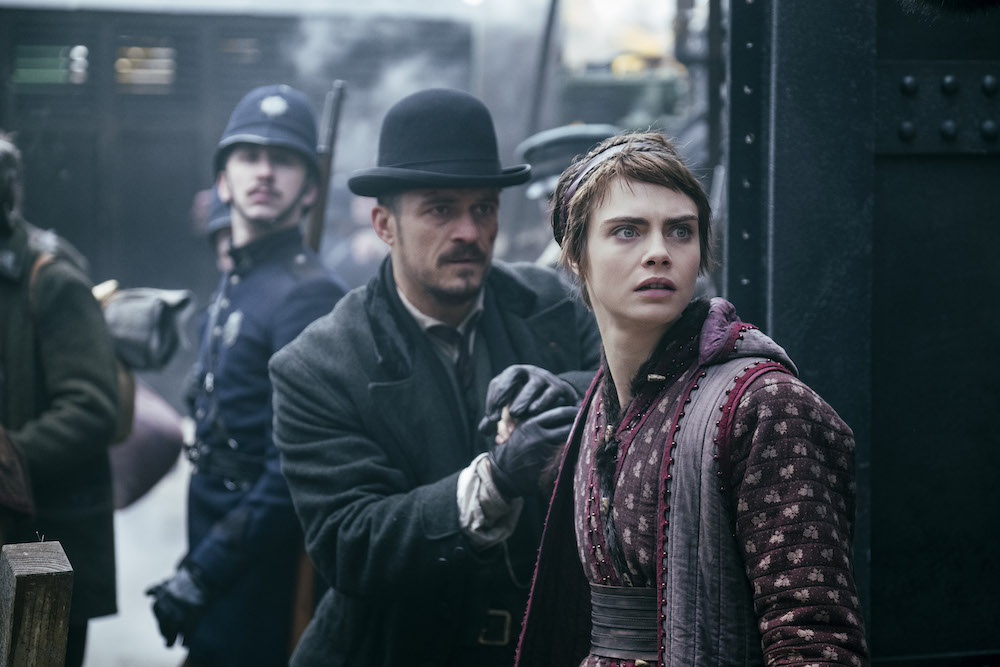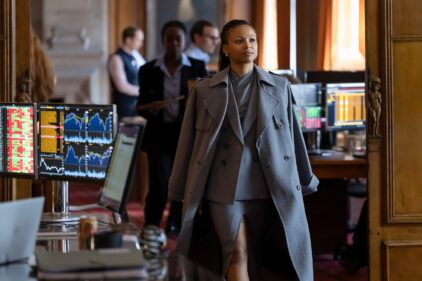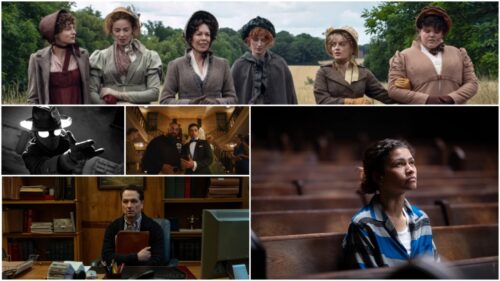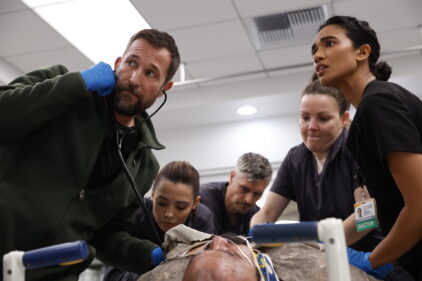There’s a certain kind of book you read, even though you know it’s maybe not great. It’s got the things you like in abundance, maybe—one example, murders in quaint English villages where the love interest might be but is probably not the murderer and everyone is constantly having tea or port—or it’s just ridiculous enough that you can’t stop, even though you know there are better books out there. You enjoy the hell out of them, even if the prose is bad or the plot preposterous. It’s delicious both because of and in spite of its insufficiencies. It’s not without merit, but its flaws are obvious.
I would read the hell out of “Carnival Row.”
It would be easier to use a food analogy for this Amazon series, which stars Orlando Bloom and Cara Delevingne as a human detective and rebel faerie, respectively. The problem with calling “Carnival Row” a bag of Cool Ranch Doritos or an order of fries from McDonald’s is that those things are actually bad for you. “Carnival Row,” premiering this Friday, is not garbage. It is comically unsubtle, but earnest, and while not self-aware, it is also not self-indulgent. Many of its characters could generously be described as paper thin, but its cast is game and in many cases, seriously skilled. (Jared Harris is in “Carnival Row”; this is not a drill.) To call it haphazardly plotted would be a great understatement. Its flaws are obvious, but so is its appeal—and if it bores you at any point, just skip ahead a bit. The odds of missing anything important are pretty slim, truth be told.
The meandering plot—tense beginning, tense ending, aimless and endless middle—should not, perhaps, come as a surprise, given the project’s background. The series began life as A Killing On Carnival Row, a film script by Travis Beacham which appeared (per Amazon) on the very first Hollywood Blacklist in 2005. Back then it was presumably a movie-length movie; it is now an eight-episode television show, which has already been given a second season. The finale which does a great job of satisfyingly wrapping up a few storylines while leaving the door open for others, it is perhaps the only time it is good at being a TV show, the inverse of a dog who just can’t figure out that whole fetch thing. Beacham and the show’s other writers have a few great knacks—ridiculous names, rich jerks, world-building, fictional slurs—but spend much of this first season moving the ludicrous plot forward by inches and killing time. How much time? No idea whatsoever. Might be days. Might be months. Probably not years. But hey, there are corsets for wings!

Now, for some of those names. We meet Vignette Stonemoss (Delevingne) as she’s running through the woods, dodging bullets and strangling wolf-bears (maybe?) as she tries to help a group of fae refugees escape. It’s not heroism, she later insists; it’s just a job, and when she alone makes it to the waiting ship alive, she decides it’s time to hang up her spurs and become a refugee herself. This shoves her into indentured servitude, and when she’s the only survivor of a shipwreck, she finds herself and her contract in the home of the sniveling Ezra Spurnrose (Andrew Gower), his petulant, marriage-obsessed sister Imogen (Tamzin Merchant, a series standout), and their faun housekeeper Afissa (Tracey Wilkinson). The Spurnroses have a mysterious wealthy new neighbor, who himself is a faun—the handsome, brooding Mr. Agreus (David Gyasi), who’s met with snobbery at best and hostility and prejudice at worst. It’s prickly. Luckily for Vignette, this is a city where you are bound to run into everyone you’ve ever met without much effort.
Like the Spurnroses, much of the city—presided over by Jared Harris’ Chancellor Absalom Breakspear, who has an intelligent, ambitious wife (Indira Varma) and a spoiled layabout son (Arty Froushan—is deeply suspicious of the refugees fleeing from their war-torn country; the fae and fauns, on the other hand, just want to stay alive. Enter Rycroft “Philo” Philostrate (Bloom), a detective with the constabulary who fights against the injustice faced by the residents of Carnival Row, while trying to hunt down the serial killer hunting them down. (That killer, no joke, is named Jack. He rips.) But his search leads him to a greater threat, a menacing beast targeting people and fae with no apparent connection to each other. There’s also Tourmaline Larou (Karla Crome), a fae sex worker who is also a poet, portraitist, and friend and ex-lover of Vignette’s; Sophie Longerbane (Caroline Ford), the canny daughter of Breakspear’s political opposition; and Runyan Millworthy (the great Simon McBurney), a street performer whose enchanting puppet show is actually a pack of trained kobolds. Oh, and Philo is Vignette’s ex, and he faked his death before leaving her. This is a partial list.

Beacham’s world is richly textured—he told me at this year’s Television Critics Association that he drew a detailed map of the Row when he was first working on this story in college; he knows every block—and directors like Thor Freudenthal and Jon Amiel capture that texture, even luxuriate in it. It can be overwhelming, especially when the story is thin; if you’re at all like me, you’ll spend a lot of time watching the scenery when you should be watching the scene. But when the storytelling approaches the level of the world-building and subsequent production design, it can be engaging, even enthralling. One late-season scene sees a gung-ho Delevingne process some very big emotions in what’s essentially a museum, if a very questionable one; the combination of her grief, the intense camera work, and the design makes for a potent cocktail.
Yet I can’t wholeheartedly recommend “Carnival Row,” as much as I enjoyed it (and as eagerly as I confirmed that yes, it had already been renewed.) Beacham, Marc Guggenheim (also an executive producer) and company can’t help but lay everything on a little thick, from those delicious names to the political and social themes, which can be reductive and even thoughtless. I took detailed notes and could not tell you when certain events occur; with the exception of the third episode, which captures Philo and Vignette’s meet-cute, courtship, and death-faking end in flashback, they all tend to blend together. The rich visual world doesn’t particularly help there, either; fae spaces look like fae spaces, save the brothel; human spaces look like human spaces, save the constabulary; all the streets look exactly the same. Great, but the same.
This will madden some. At another time, it might have maddened me. But each and every member of the cast acts their little hearts out, and each and every corner of this world could not possibly be more “Carnival Row.” Like many a silly novel, it is a shambles, but an enjoyable one, and as long as you’re up for some full-throated groans (Tourmaline Larou?!) you’ll be rewarded with a long, messy, and satisfying distraction.
Complete season watched for review.
